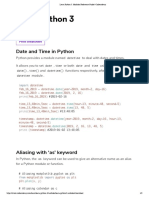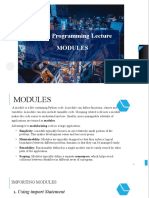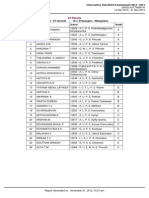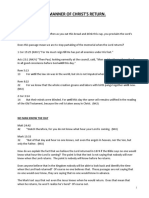0% found this document useful (0 votes)
42 views3 pagesLearn Python 3 - Modules Cheatsheet - Codecademy
The document provides an overview of using modules in Python, specifically focusing on the datetime module for handling dates and times, and the random module for generating random numbers. It explains how to import modules using different methods and demonstrates aliasing with the 'as' keyword. Additionally, it includes examples of creating date and time objects, as well as generating random integers and selecting random items from a list.
Uploaded by
tw8qsqf9n7Copyright
© © All Rights Reserved
We take content rights seriously. If you suspect this is your content, claim it here.
Available Formats
Download as PDF, TXT or read online on Scribd
0% found this document useful (0 votes)
42 views3 pagesLearn Python 3 - Modules Cheatsheet - Codecademy
The document provides an overview of using modules in Python, specifically focusing on the datetime module for handling dates and times, and the random module for generating random numbers. It explains how to import modules using different methods and demonstrates aliasing with the 'as' keyword. Additionally, it includes examples of creating date and time objects, as well as generating random integers and selecting random items from a list.
Uploaded by
tw8qsqf9n7Copyright
© © All Rights Reserved
We take content rights seriously. If you suspect this is your content, claim it here.
Available Formats
Download as PDF, TXT or read online on Scribd
/ 3























































































